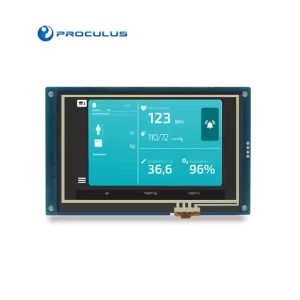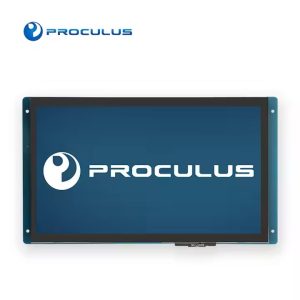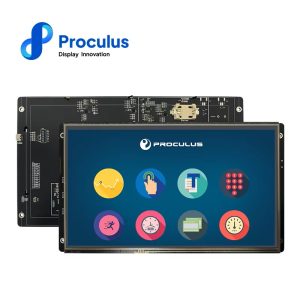What Is Hmi (Human Machine Interface)?
In the world of modern technology and automation, the acronym “HMI” is frequently used, but what exactly is HMI, and why does it matter? In this blog, we’ll unravel the mysteries surrounding Human Machine Interface (HMI), with a focus on Proculus and its role in enhancing this crucial aspect of human-machine interaction.
Introduction to HMI – Bridging the Gap
What Is HMI (Human Machine Interface)?
HMI, short for Human Machine Interface, is a critical component of industrial automation and control systems. At its core, HMI is the bridge that connects humans with machines, allowing operators and engineers to interact with and monitor complex systems efficiently. Think of it as the user-friendly interface that makes machines and processes understandable and manageable.
The Evolution of HMI – From Buttons to Touchscreens
The history of HMI is an exciting journey from physical buttons and knobs to today’s sophisticated touchscreens and graphical interfaces. Proculus, a leading brand in display technology, has played a significant role in this evolution. Let’s explore the transformation of HMI and how Proculus has contributed to this progress.
Physical Controls: In the early days of automation, HMI was limited to physical controls like buttons, switches, and dials. While functional, these interfaces often required a steep learning curve and were less intuitive.
Proculus Touchscreens: Proculus recognized the need for more intuitive and user-friendly interfaces. They introduced touchscreen displays that revolutionized HMI. These displays, with their vibrant colors and responsive touch capabilities, made it easier for operators to control and monitor machines and processes.
Graphical Interfaces: Modern HMIs now feature graphical interfaces that provide a visual representation of the system being controlled. Proculus displays excel in rendering these graphical elements with precision and clarity, enhancing the user experience.
The Significance of HMI in Industrial Applications
HMI is not limited to industrial automation; it extends to various fields, including manufacturing, healthcare, transportation, and more. Let’s explore why HMI is essential in these industrial applications:
-
Efficiency and Productivity: In manufacturing, HMI systems streamline operations by providing real-time data and control. Operators can make informed decisions quickly, reducing downtime and increasing productivity.
-
Safety: In critical applications like healthcare and transportation, HMI plays a vital role in ensuring the safety of both operators and the general public. Proculus displays offer clear and reliable visuals, which are essential in these scenarios.
-
Data Visualization: HMI systems often include data visualization tools that help operators analyze trends and anomalies. Proculus displays excel at presenting complex data in a comprehensible manner.
-
User Experience: A well-designed HMI improves the overall user experience. Proculus touchscreens are known for their responsiveness and ease of use, making them a popular choice in various industries.
The Future of HMI – Beyond Touchscreens
As technology continues to advance, the future of HMI holds exciting possibilities. While Proculus touchscreens have set the bar high, the evolution of HMI is far from over. Here are some trends that may shape the future of HMI:
-
Gesture Control: Imagine controlling machines with simple gestures, much like you would with a touchscreen. Gesture recognition technology is on the horizon, and Proculus is likely to play a part in its development.
-
Augmented Reality (AR): AR-based HMI systems can overlay digital information on the physical world, providing operators with a wealth of data in real-time. Proculus displays could enhance the visual experience in AR applications.
-
Voice Commands: Voice-activated HMI systems are becoming more prevalent, making it even easier for operators to interact with machines. Proculus displays with integrated microphones and speakers may become part of this trend.
-
Enhanced Security: With the increasing importance of cybersecurity, future HMIs may incorporate advanced security features. Proculus will likely be at the forefront of ensuring secure HMI interactions.
In the ever-evolving world of technology, Human Machine Interface (HMI) stands as a crucial link between humans and machines, enabling efficient control and monitoring of complex systems. Proculus, with its innovative touchscreen displays and commitment to enhancing user experiences, has been instrumental in advancing HMI technology.
As we look to the future, the evolution of HMI holds exciting prospects, and Proculus is poised to continue leading the way. Whether in industrial automation, healthcare, transportation, or any other field, Proculus displays will continue to play a vital role in shaping the user-friendly interfaces of tomorrow’s technology. So, the next time you interact with a machine effortlessly, remember that Proculus might be behind the intuitive and captivating HMI that makes it all possible.

 English
English


